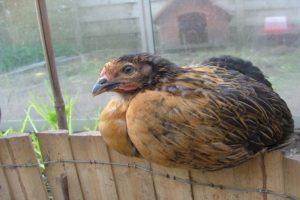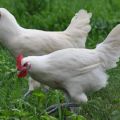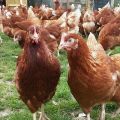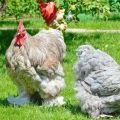Description and characteristics of hens of the Hamburg breed, breeding features and analogues
Growing Hamburg chickens has a number of features. This breed of birds is considered quite popular. The birds are characterized by high parameters of productivity, good health and quick adaptation to various conditions. In order for the birds to develop well and not get sick, they need quality care. It includes the creation of optimal conditions in the chicken coop, a balanced and complete diet.
The origin of the breed
Representatives of these dwarf chickens appeared in 1740. At the same time, birds became popular much later. The birds got their name because of their transportation through the port of Hamburg. German scientists have made a lot of efforts to improve the breed. As a result, it was possible to achieve high decorativeness in combination with excellent productivity.
Description and characteristics of Hamburg chickens
Before breeding birds, you should familiarize yourself with their main features. This will help you select quality birds.
Appearance
These chickens are characterized by the following features:
- small size;
- small head;
- pink-shaped scallop that tapers towards the neck;
- long keel;
- rounded muscular chest;
- white glossy lobes;
- reddish eyes;
- horizontal dorsal line;
- shortened beak;
- long slender legs with feathering up to the shin.

Standard colors
This breed is characterized by plain or multi-colored feathers. Often there are chickens in stripes or spots. The following are the standard colors:
- white and silver;
- monotonous black;
- black dots and the same tail on a brown-gold background;
- light gray undercoats and white feathers;
- black stripes on a brownish-gold background.
Culling standards
Culling of birds is carried out according to the following criteria:
- the wings hang down, and do not press against the body;
- the tail sticks out like a fan;
- large torso;
- very short or long legs.
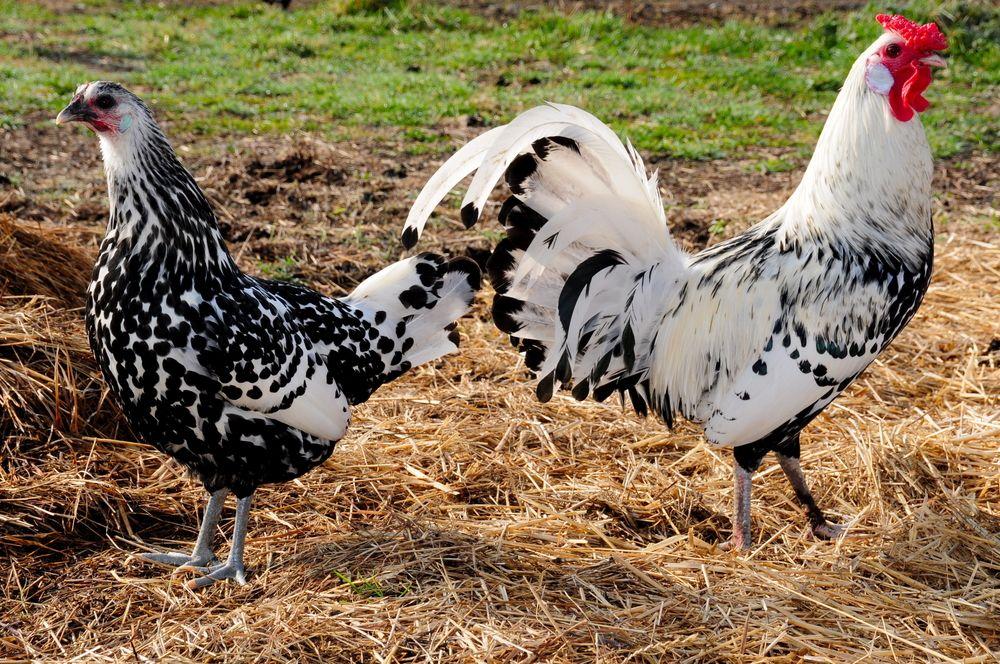
Productivity indicators
An adult female weighs 2-2.5 kilograms, and a male 2.5-3. These birds are characterized by high egg production parameters. Moreover, the first eggs can be obtained already at 4-4.5 months. Annual parameters of egg production reach 195 pieces. Sometimes this number reaches 250 eggs. Egg weight - 50-60 grams.
The nature of the birds
Hamburg birds are distinguished by their energetic character. Moreover, they are considered very shy, therefore they need careful handling.
With an affectionate attitude, the birds easily get used to the owner.However, they are afraid of loud sounds and strangers. Therefore, it is recommended to place the chicken coop away from noisy places.
Difference from other breeds
Compared to other breeds, these chickens are considered more unpretentious. They are characterized by excellent adaptation to different climatic conditions. At the same time, the average survival rate is typical for chickens. In young animals, this parameter does not exceed 85%. To avoid the death of livestock, the birds should provide suitable conditions.
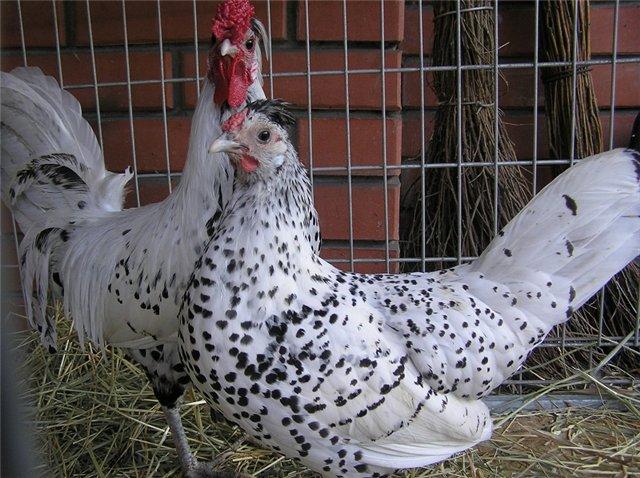
Another distinctive feature of birds is the early onset of egg production. This happens at 4.5 months. Also, this aviary breed feels great when kept outdoors. It is permissible to grow chickens even in areas with unfavorable climates, but it is worth preparing well for their breeding.
Advantages and disadvantages
The key advantage of the breed is unpretentious care. Chickens have uniform egg production throughout the year. It falls only in severe cold weather. Other pluses of the breed include the following:
- early onset of egg production;
- calm character;
- little need for feed;
- resistance to infections;
- decorative appearance.
The main disadvantage of the breed is the lack of maternal instinct in chickens. In addition, birds are characterized by a short period of productivity.

The specifics of maintenance and care
In order for chickens to grow normally and develop well, they need full and high-quality care.
House preparation
Outdoor keeping is suitable for active birds. In this case, chickens need a spacious poultry house. There should be 4 adult birds per 1 square meter. Chickens are stressed in cramped conditions. Good ventilation is of no small importance. It is recommended for birds to put perches. This is done at a height of 1 meter. There should be 1 box for 5 chickens. Hamburg chickens tolerate the cold well. Therefore, it is permissible to keep them in an unheated chicken coop. In this case, the temperature in the hen house should be at least +8 degrees. In winter, it is recommended to turn on the lamps in the house so that the daylight hours last at least 13-14 hours.
Arrangement of a walking area
Hamburg chickens require daily walks. Therefore, it is worth attaching a free aviary to the poultry house. Birds fly well, so a high fence is required. It is also worth pulling the mesh on top.
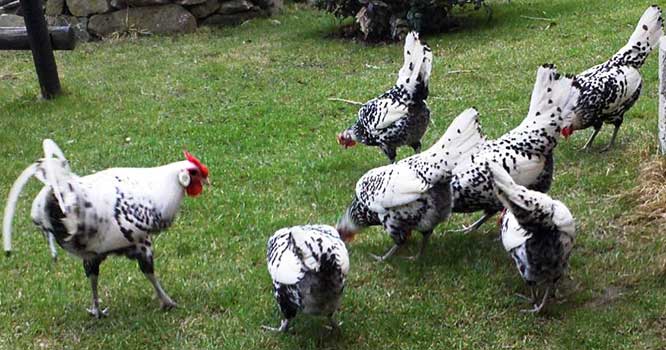
Installation of feeders and drinkers
Feeders should be freely available. They are elongated narrow boxes. To prevent chickens from climbing inside, it is worth installing them at a low height. There should be enough feeders in the house for the birds to eat at the same time. Drinkers must be present in the chicken coop. Their volume should be 5-6 liters.
Diet for Hamburg chickens
It is recommended to feed birds three times a day. In the morning and evening, it is worth giving them cereals, and in the afternoon - wet mash. They must be cooked in broth. It is also permissible to use serum as a base. It is recommended to add herbs in summer and grass flour in winter. Chickens have a need for minerals. Salt, chalk, eggshells, yeast are added to the feed. When changing plumage, vitamins are introduced into the diet.
Breeding features
Layers are sexually mature at 4.5 months. However, eggs from females 1 year old are suitable for incubation. For breeding chickens, it is worth using a layer of a different breed. An incubator is also suitable for this purpose.
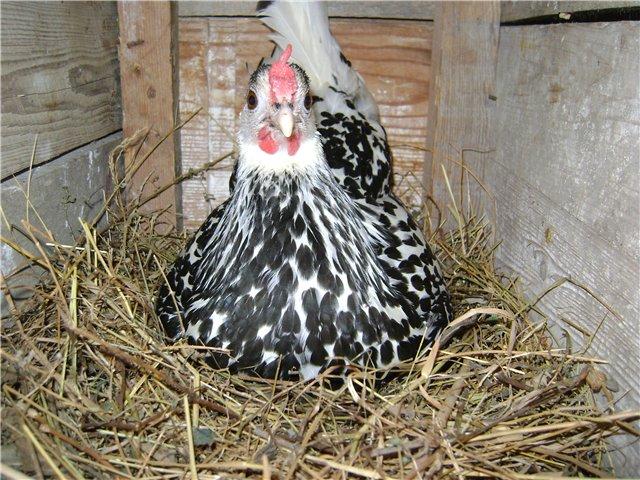
Chicks appear on the 21st day. Their weight is 40 grams. Chicks need special care. It is recommended to keep them in warm brooders. The temperature should be + 26-30 degrees. For the first week, chicks are recommended to be fed at 3 hour intervals. First, they should be given a boiled egg. Subsequently, cottage cheese should be added to the feed. Chickens also need green onions.For 5 days it is worth adding millet, corn, fish. It is important to add fish oil and chalk to the feed.
Diseases and prevention
These chickens suffer from various diseases. Non-infectious pathologies include vitamin deficiency. To cope with them, it is worth adding vegetables to the diet. Another dangerous disorder is bronchopneumonia. To eliminate it, Terramycin should be used. Of the infectious pathologies, chickens are more susceptible to pullorosis. With this disease, the probability of death of birds is high. Antibiotics are usually used for treatment.
For the prevention of pathologies, it is worth following these rules:
- keep the hen house clean;
- vaccinate on time;
- remove uneaten food;
- control the purity of the water.

Breed analogs
Hamburg chickens have the following analogues:
- Russian white.
- May Day.
- Leningrad chintz.
Hamburg chickens are very popular with poultry farmers. They have a decorative appearance and are distinguished by high productivity parameters. In order for the chickens to rush well and not get sick, it is recommended that they provide optimal housing conditions. The prevention and treatment of diseases is of no small importance.

